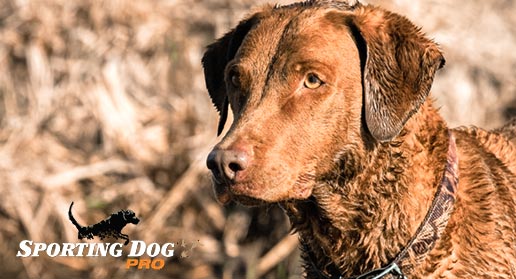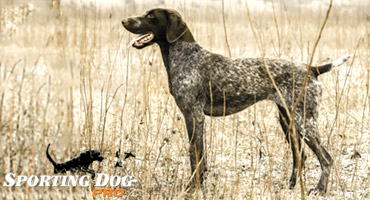You have no items in your shopping cart.
Chesapeake Bay Retriever

Just as at home in the water as it is on land, the Chessie, as it is often called, is an astounding waterfowl retriever. Originally called the Chesapeake Bay Ducking Dog because of it’s unusual origination. Apparently, in 1807 an English ship wrecked off the coast of Maryland. The crew and it’s cargo, including two Newfoundland puppies were rescued and either given or traded, depending on which story you hear, to the Captain of the rescuing ship, the Canton. The two puppies turned out to be exceptional retrievers and were named “Sailor” and “Canton” by the captain. Upon returning to the shores of the Chesapeake Bay and word spreading of the extraordinary rescue pups, they were used to breed with many of the local water dogs in the area. In attempts to perfect the offspring of these already remarkable retrievers, other crosses who had proven their viability in the icy waters, such as the English Otterhound and other curly coated retrievers were bred with them. After a large amount of purposeful breeding, the offspring that began to make a name for itself was created and accepted in the area as the Chesapeake Bay Retriever and officially recognized by the AKC, as such, in 1878.
The Chessie's coat is built for retrieving in cold icy waters.
Due to the original breeding, the Chessie has one of the most astounding coats, it’s thick, oily, dense outer coat and woolly undercoat enables him to endure unbelievably low temperatures in icy waters, just like those of the Chesapeake Bay. The most common of the eight recognized colors, all variations of brown, is the shade called “dead grass.” Dead grass, as those of you who have been on the shores of the Chesapeake Bay or other bodies of water in that area would recognize as being very beneficial as camouflage. The Chessie was bred for his body and early breeders only used the most robust and strong pups to strengthen the breeds’ durability. Therefore, Chessies are usually very muscular and strong. They are surprisingly swift on their feet for such a muscular dog even while running through thick reeds and grasses however, they tend to wear out faster than some of the more lean breeds of water dogs.
The Chessie is certainly a trainable retriever but, tends to weigh in on the more stubborn side of hunting dogs. They prefer working on their own and can become quite dominate in situations where they are challenged, whether by man or fellow dog. Chessie’s are a breed that would certainly benefit from modern technology and e-collar training, just to keep him from taking to his own hunting plans. Most Chessies are intelligent and emotionally complex meaning, they put thought into their actions. You can watch him survey his surroundings and know that whatever move he makes next will be because he thinks it’s the best one, maybe not the best one for you but, just know he considers what he’s doing.
Chesapeake Bay Retrievers make great family dogs as well.
Very loyal and affectionate, the Chessie makes a great pet, even for children. Known for their keen protective nature, they even make great watchdogs. They get along well with other dogs and are usually fine with other small animals, as long as they aren’t challenged. They aren’t unkind by nature but, the sheer mass of their body alone can hurt smaller animals that don’t know to back off.
This strong, powerfully built retriever has an interesting, unique beginning. Specifically bred for icy waters, you can usually depend on him to stand right by you, even in appalling weather and he will certainly never question jumping right in to retrieve whatever you bring down. He’s definitely a retriever that likes to work and the kind of dog you would want with you on those cold, wet mornings.











